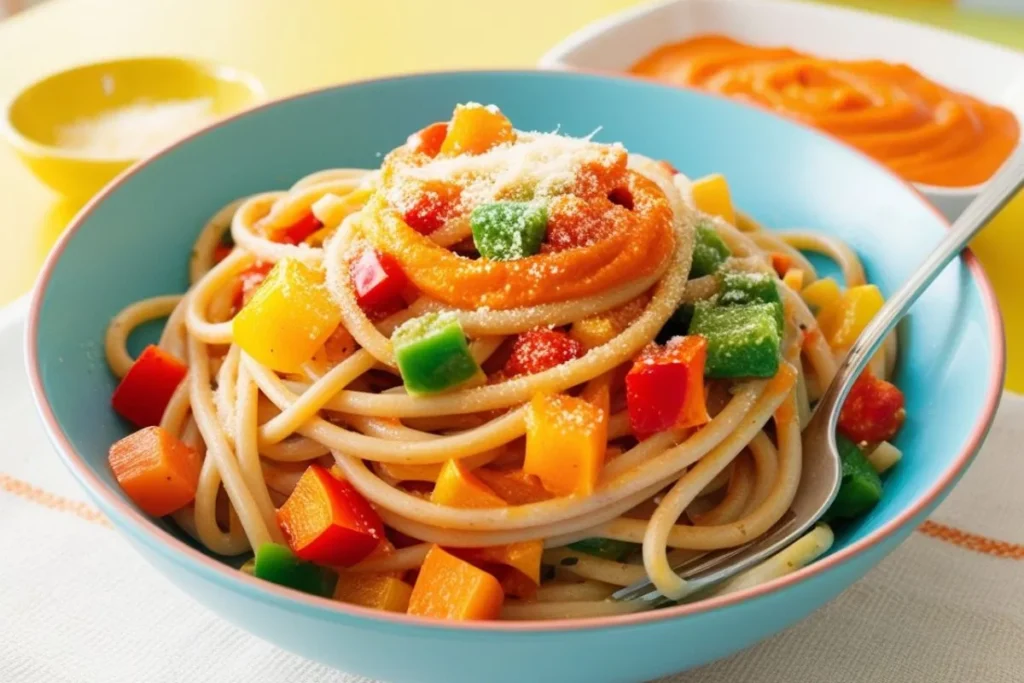Suppers for Picky Eaters
Introduction
Mealtime with picky eaters can often feel like a battle, especially when it comes to supper for picky eaters. Whether it’s a refusal to try new foods or a strong preference for familiar favorites, parents of picky eaters know how stressful and frustrating the evening meal can be. However, picky eating is a common phase in child development, and with the right strategies, supper for picky eaters can become an enjoyable and stress-free experience for both parents and children.
Understanding the reasons behind picky eating, how developmental stages influence food preferences, and how to create positive mealtime experiences are key to helping children expand their food choices. In this article, we’ll explore the psychology of picky eating, offer practical tips for serving supper for picky eaters, and provide fun, nutritious recipes that are sure to please even the most selective of palates.
Table of Contents
Understanding Picky Eaters: Why Supper Can Be a Challenge
Feeding children, especially picky eaters, can be one of the most stressful aspects of parenting. When it comes to supper for picky eaters, the process often feels like a battle. Every meal seems like a test of patience, and it can leave parents feeling frustrated and defeated. However, understanding the reasons behind a child’s pickiness and adopting strategies to overcome it can transform mealtimes into an opportunity for connection and growth. This article explores why picky eating happens, how parents can deal with it, and offers practical tips to encourage more adventurous eating habits at supper.
How Developmental Stages Affect Eating Habits
As children grow, they undergo numerous developmental stages, many of which directly influence their eating behaviors. During infancy and toddlerhood, children experience rapid growth and changes in their physical and emotional needs. Around the age of 2 or 3, children begin to assert their independence, and food becomes one of the areas where they test their boundaries. At this stage, they may develop food aversions or become more cautious about trying new things. This is a completely normal part of their development, but it can make mealtime, especially supper, a real challenge.
Some children become naturally cautious about food, particularly when it comes to textures, colors, or strong flavors. For instance, a child might love mashed potatoes but refuse to eat a potato in any other form. This can be perplexing to parents, but understanding that these preferences are often related to sensory development can help reduce frustration. A child’s taste buds are still maturing, and they may be more sensitive to strong flavors, making certain foods overwhelming. Similarly, the texture of food plays a huge role—many picky eaters avoid foods that are too mushy, lumpy, or slimy.
Understanding these phases can help parents remain patient and offer encouragement without forcing the issue.
Reasons Behind Picky Eating
Picky eating is not just about being stubborn; it’s a complex issue that can stem from various sources. Sensory responses, past experiences, and individual taste preferences are all factors that contribute to picky eating habits. Children are often more sensitive to textures and flavors than adults, which can make seemingly minor differences in how a food is prepared feel overwhelming. A child who had a negative experience with a particular food—such as choking or gagging on a certain texture—may develop an aversion to that food that lasts for months, if not years.
Past experiences can play a key role in forming a child’s food preferences. A child who was forced to eat a certain food may develop negative associations with it, leading to a long-lasting dislike. On the other hand, positive experiences with food, such as helping in the kitchen or sharing a meal with family members, can help children build a more positive relationship with food.
Also, just like adults, children have individual tastes. Some may prefer sweeter foods, while others are more open to savory or spicy flavors. This individuality is perfectly natural and part of their journey toward discovering their food preferences.
Keeping Mealtime Positive
One of the most important things parents can do when dealing with a picky eater is to stay calm and positive. It’s easy to become frustrated when your child refuses to eat the dinner you’ve worked hard to prepare, but creating a relaxed, low-pressure environment is crucial. Children are more likely to try new foods when they don’t feel pressured, and they tend to mirror the emotional atmosphere at the table.
Instead of focusing on what the child won’t eat, try to emphasize what they do like. Keep the conversation light and engaging, and avoid criticizing or punishing a child for not eating. The more relaxed the environment, the more open children will be to trying new foods.
Practical Tips for Serving Supper For Picky Eaters
Dealing with picky eaters takes creativity and patience, but it can also be a fun learning opportunity. Here are some practical tips to help you serve supper to picky eaters while ensuring mealtime remains enjoyable.
Get Them Involved in the Kitchen
Children are more likely to eat foods that they’ve had a hand in preparing. Let them help with meal planning, grocery shopping, or simple cooking tasks. Even young children can participate by stirring ingredients, washing vegetables, or arranging food on the plate. This involvement can make the food feel more familiar and less intimidating.
Additionally, cooking together can be a bonding experience that encourages children to be more open to trying new foods. They may feel a sense of pride in their creation, which can increase their willingness to taste it.
Put a Twist on Familiar Favorites
Picky eaters often resist unfamiliar foods, but introducing new flavors in familiar dishes can make the process less intimidating. For example, if your child loves spaghetti, try mixing a small amount of pureed vegetables into the sauce. Or, if they enjoy chicken nuggets, try baking them at home using ground chicken and a variety of spices for added flavor. By sneaking in new ingredients, you can broaden their palate without making the meal feel too different.
The key is gradual integration. Start with small changes and slowly increase the variety of flavors and textures as your child becomes more comfortable.
Keep Portions Small and Manageable
Large portions can be overwhelming to children, especially picky eaters. When serving supper, consider offering smaller portions to make the meal feel more manageable. If the child is still hungry, they can always ask for more, but this approach allows them to feel more in control of the meal.
Another useful tip is to serve a variety of small side dishes so that children have options to choose from. Children are more likely to have a positive attitude towards mealtime when they feel they have some control over their food choices.
Kid-Approved Supper for Picky Eaters
Here are some simple, nutritious recipes that even the pickiest of eaters may enjoy. These meals are designed to appeal to children’s tastes while sneaking in some extra nutrition.
Recipe 1: Cauliflower Mac and Cheese

Ingredients
- 1 cup macaroni
- 1 cup cheddar cheese
- 1/2 cup cauliflower puree
Instructions
- Cook the macaroni following the instructions on the package, then drain it.
- Stir the cauliflower puree into the cooked pasta.
- Add cheddar cheese, stirring until it melts and coats the macaroni.
Why Kids Enjoy It: This recipe offers a creamy texture without an overpowering veggie taste. The mild flavor of cauliflower gets masked by the cheese, making it an easy way to introduce more vegetables into a child’s diet.
Recipe 2: Chicken and Carrot Mini Sliders

Ingredients
- 1 cup shredded chicken
- 1/2 cup chopped carrots
- 4 mini whole wheat buns
Instructions
- Combine shredded chicken with carrots and a sprinkle of cheese.
- Stuff this mixture into the buns and warm in the oven at 350°F for a few minutes.
- Serve with a small dipping sauce, like yogurt.
Why They’ll Love It: These mini sliders are easy to hold and offer a fun way to enjoy dinner. Plus, the combination of chicken and carrots makes them a great source of protein and vegetables.
Recipe 3: Colorful Veggie Pasta

Ingredients
- 1 cup whole wheat pasta
- 1/2 cup diced bell pepper
- 1/4 cup carrot puree
Instructions
- Boil pasta and drain well.
- Add diced bell pepper and carrot puree, mixing until coated.
- Serve with grated cheese.
Why It Works: The bright colors appeal to kids and the mild flavors make it approachable. The pasta adds a familiar texture, while the vegetables are hidden in the puree, making it less intimidating.
Common Missteps Parents Encounter with Picky Eaters
While trying to get picky eaters to try new foods, there are some common missteps parents should avoid:
Forcing Them to Eat
Pushing children to eat foods they dislike can backfire, creating negative associations with mealtime. Instead of forcing the issue, provide the food, but allow the child to decide when and how much to eat.
Offering Sweets as a Reward
Using desserts as a reward for eating vegetables or trying new foods can establish an unhealthy relationship with food. It teaches children to view sweets as something “better” than other foods, which can encourage unhealthy habits in the long run. Instead, keep desserts separate and make sure all foods are presented as equally enjoyable.
Catering Only to Their Preferences
While it’s important to respect a child’s preferences, constantly catering to them can limit their exposure to new foods. Gradually introduce new items alongside familiar favorites to broaden their tastes without overwhelming them.
FAQs on Supper for Picky Eaters
How can I gently introduce new foods?
Present unfamiliar foods alongside those they already know, and show enthusiasm by enjoying them yourself. This can create positive associations with the new foods.
What are easy recipes for fussy eaters?
Mac and cheese with cauliflower, mini chicken sliders, and colorful veggie pasta are good choices for picky eaters. They combine familiar foods with healthy twists.
Is hiding vegetables okay?
Yes, hiding vegetables can be a helpful tactic, but it’s also beneficial to let children see and recognize what they’re eating. Eventually, try introducing vegetables in their natural form, so children can develop a taste for them.
How often should I serve new foods?
Aim to introduce one new food per week. This gradual approach keeps things interesting without overwhelming your child.
Conclusion
Picky eating doesn’t have to be a source of stress. With patience, creativity, and an understanding of developmental stages, parents can turn mealtime challenges into opportunities for growth. By involving children in food preparation, offering familiar foods with a twist, and creating a positive mealtime atmosphere, you can help your child explore new foods at their own pace.
Call to Action: Try out these recipes and tips for supper for picky eaters. We’d love to hear about your experiences and what strategies have worked best for you!

